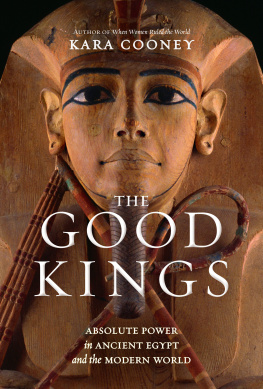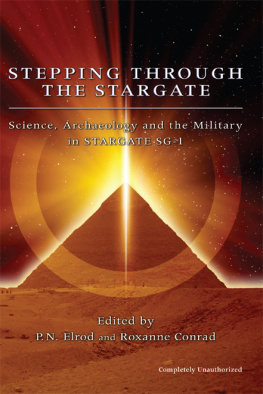Giza StarGate: Cosmic War and Hidden Agendas
Aiden Solomon
Copyright 2015 by Duel City Books
All rights reserved. This book or any portion thereof may not be reproduced or used in any manner whatsoever without the express written permission of the publisher except for the use of brief quotations in a book review or scholarly journal.
First Printing: 2015
Contents
Giza StarGate: Cosmic War and Hidden Agendas
Chapter 1: Introduction

The Great Pyramid at Giza has inspired many stories over the centuries. This book will tell another story, one that fits the facts. The Great Pyramid stands on a desolate plateau, in a line with two smaller pyramids. Nearby the Sphinx seems to stand guard over them. Nobody knows for certain who built the Great Pyramid and why, but conventional archaeologists insist that it was built as a tomb for the pharaoh Cheops (also called Khufu). However, Khufu was never buried in the pyramid, and nobody else was buried there, either.
The Great Pyramid has no writing and no pictures to give us a clue as to who built it and why. However, the structure itself does offer some clues.
In ancient times, somebody built great stone monuments on the banks of the Nile River. We dont know who they were, or when they built their monuments. Archaeologists attempt to assign dates to the Sphinx and the pyramids and temples of ancient Egypt, but their dates are the result of guesswork. Granted that their guesses are educated, based in part on science, but they have been educated in an accepted theoretical framework that tosses out the traditions of the native people as the myths of a superstitious culture. This book attempts to show just how wrong the archaeologists have been in clinging to their biased view, which is based on the myth that white European men, with their classical education and scientific method, are superior to the indigenous people whom they study.
Ancient Khemit (Egypt being merely the anglicized form of the ancient name for Memphis, the former capital of Khemit), was known as the black land because the silt deposited by the Nile River made fertile farmland in what today has become the vast western desert of Egypt. The people of Khemit built monuments on the banks of that ancient river, which was more than three miles wide in some places. The ancient river was in a different location from the river that we see today. In fact, the Nile has moved to the east since ancient times, leaving the pyramids and cities of the past in the arid desert, buried in sand. But when they were built, they must have sat on the banks of the Nile.
The obvious conclusion is that those monuments must have made use of the water in some fashion. Perhaps the stone blocks, each of which weighed many tons, were floated in on barges and set into place on a flooded plateau, making use of the water to assist them in moving the stones. Perhaps water flowed through the interiors of at least some of the pyramids, to pump that water into canals to water the fertile farmland. Perhaps the flowing water was also used to generate electricity.
Some experts have pointed out that the pyramids resonate at specific frequencies of sound. They recommend chanting inside the interior chambers in order to attain spiritual enlightenment of some sort. Some propose that sound waves were used to move the granite blocks, many of which weigh ten tons or more.
Others stick to the accepted theory of the European archaeologists that the pyramids were built as tombs for the dynastic pharaohs of Egypt. This seems highly unlikely, since no burial has been found inside the pyramids of ancient Egypt. Some tombs have been discovered near some pyramids, but no Egyptian pharaoh has ever been found buried inside a pyramid.
The most interesting theory, which forms the heart of this book, is that the pyramids at Giza are machines. Specifically, the Great Pyramid is a stargate. Somebody wanted to leave this planet, and if humanity is to survive, we need to know who they were and why they want to leave. And we must stop them.
Chapter 2: Pyramid Basics

Egyptologists tell us that the pyramids and other monuments were built by primitive people using rock hammers and copper chisels to quarry the stones. They dragged the stones into place using ropes to drag them up huge ramps made of sand. And they did all this in just 20 years! Their theory is ridiculous on the face of it, yet they scoff at alternative theories.
Many theories about the Great Pyramid rely upon mystical ideas of enlightenment and the afterlife. Certainly the Egyptian Book of the Dead gives instructions on how to pass various tests for the departed soul, but that book was not found in the pyramids. Various texts that form parts of what we know as the Book of the Dead were found in ancient coffins and burial chambers.
(Papyrus of Ani: Egyptian Book of the Dead, http://www.africa.upenn.edu/Books/Papyrus__Ani.html )
In his book Lost Technologies of the Great Pyramid , Steven Myers presents a brilliant theory about the Great Pyramid. He believes that the stone blocks were floated in on a flooded plateau, making it relatively easy to lift them into place. Moreover, he theorizes that the pyramid was used to pump water to the cities and farms, as well as to generate power (electricity). The theory presented here does involve power, but of a different sort.
Many researchers have measured the pyramids to see if they have mathematical significance. Conventional archaeologists insist that dynastic Egypt had little or no knowledge of geometry, yet Plato and even earlier Greek philosophers tell us that they learned geometry from Egyptian priests. Egyptologists also insist that ancient Egypt did not have the wheel, despite the fact that scores of ancient texts tell us about the Egyptian war chariots. So it should not be surprising that you can find the value of pi in the Great Pyramid, which appears to be a physical representation of the ancient mathematical problem of squaring the circle. It should be no less surprising to find the value of phi, which defines the golden rectangle. Ancient Greek architects and artists used phi in their work because it was considered a magical proportion. They learned about phi from Egyptian priests. You can see the beauty of phi in the Parthenon and other ancient Greek monuments, and you can also find it in the Egyptian monuments. Pi defines the proportions of a circle, its diameter and its circumference. Phi defines the geometric shape known as the golden rectangle.
Conventional archaeologists simply refuse to give up the superstitious belief that our culture is superior to that of the ancients. They do accept that the sides of the Great Pyramid are oriented to the points of the compass with amazing accuracy, but they deny that this has any significance.
Various researchers have insisted that the Great Pyramid stands on the geographical center of the Earths land mass, but I must agree with conventional archaeologists when they dismiss this tidbit. After all, the Earth is a sphere, so any point on the globe would necessarily be in the center. Besides, islands and coastlines regularly emerge from lakes and oceans or are in undated by them, so even if Giza did stand in the center at one time, calculated by some form of inscrutable math or magic, the changes in various land masses would mean that it was simply a chance circumstance.
Chapter 3: Mathematics of the Great Pyramid









